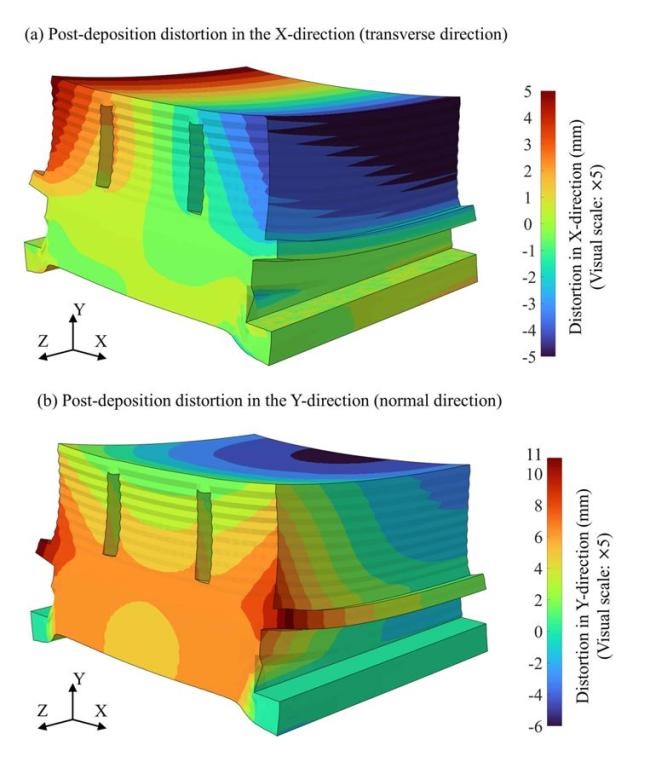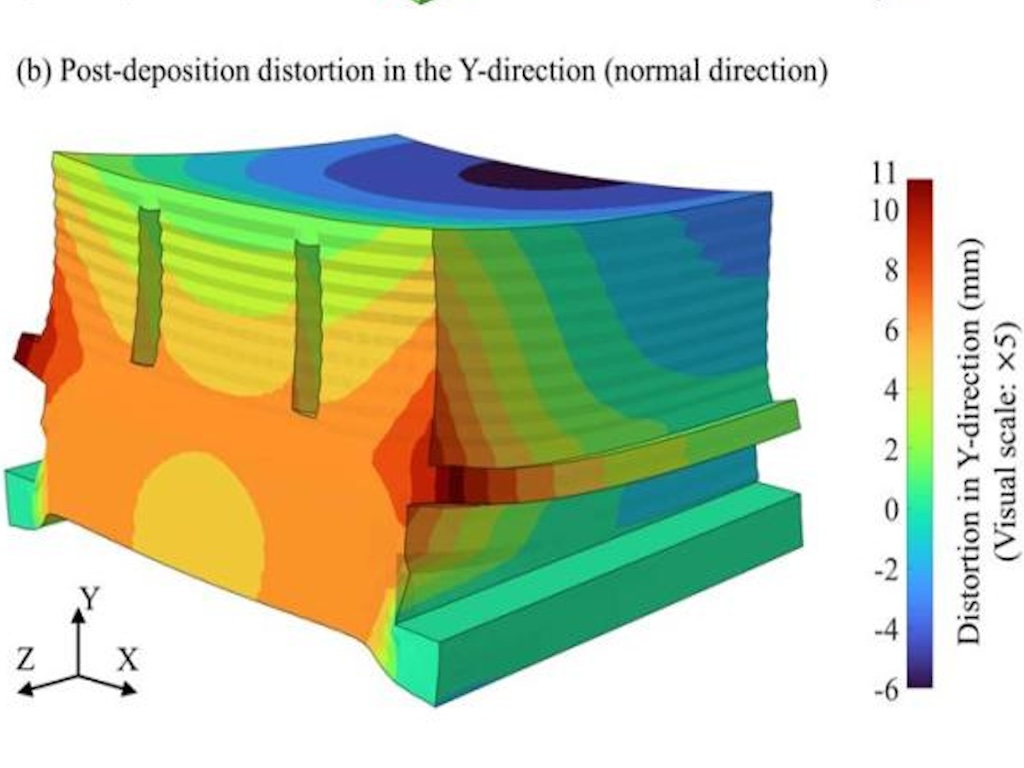April 2024 | Scientists at the Department of Energy’s Oak Ridge National Laboratory (ORNL), Tennessee, have determined how to avoid costly and potentially irreparable damage to large metallic parts fabricated through additive manufacturing, that is caused by residual stress in the material.
Industry is increasingly looking to additive manufacturing, or 3D printing, as a path to restore domestic capacity for fabricating large metal structures, much of which has moved overseas. Rather than reestablish massive foundries in the U.S., 3D printing could be used to create large parts; shortening supply chains and allowing industry to quickly acquire needed tooling and other parts. But first, research is needed to ensure 3D-printed parts can withstand the stress created during the printing process.
The ORNL researchers determined through computational modeling that large-scale additively manufactured metallic parts can develop considerable residual stress, or RS, within the material. The RS buildup results in crack formation during the hot printing process and grows larger as the material cools, infiltrating the metal and causing irreversible damage.
That is costly and inefficient said Ritin Mathews, the scientist who led the studies, and can result in invalid parts and significant material waste. These negative outcomes can be particularly costly since high-value industries such as aerospace, automotive and defense are rapidly adopting large-scale AM methods to build parts. Understanding why these cracks form and how to eliminate them could lead to more reliable 3D printing for a variety of industries.

Images showing distortion caused by residual stress in the horizontal and vertical axes of material. ORNL researchers found that simply adding material in critical regions mitigates the accumulation of stress.
“This is applicable to any metal 3D-printing process, since the general mechanics of deposition is similar across all AM processes,” Mathews added.
The team found a simple fix: Use computational modeling of the deposition process and resulting residual stress to inform the addition of support material in the form of rounded fillets or 45-degree chamfers, eliminating 90-degree angles and sharp corners. “Adding material in critical regions mitigates the accumulation of stress,” Mathews said. Such a step deliberately prevents RS concentration, thus reducing the possibility of part failure.
Parts on the order of meters in size are increasingly manufactured using AM technologies that employ fusion-based deposition. In such large-scale parts, RS and its adverse effects can be magnified compared to smaller parts. The scientists modeled builds on computers to predict what would happen when the parts accumulate residual stress and studied methods to avoid it.
“The presence of high-magnitudes of RS can cause cracks to develop in the build … reducing the integrity of components, leading to lower strength and fatigue characteristic,” Mathews and his coauthors write in a paper published in the 11th CIRP Global Web Conference (CIRPe 2023).
In addition to Mathews, the authors were Jaydeep Karandikar, Christopher Tyler and Scott Smith, all from ORNL’s Manufacturing Science Division.
Funding for this project was provided by the Department of Defense Industrial Base Analysis and Sustainment program. Research was performed at the Department of Energy’s Manufacturing Demonstration Facility at ORNL. The MDF, supported by DOE’s Advanced Materials and Manufacturing Technologies Office, is a nationwide consortium of collaborators working with ORNL to innovate, inspire, and catalyze the transformation of U.S. manufacturing.
For more information, visit energy.gov/science
(Source: ORNL/2024)
